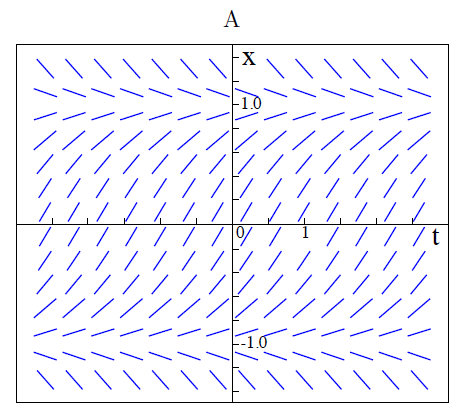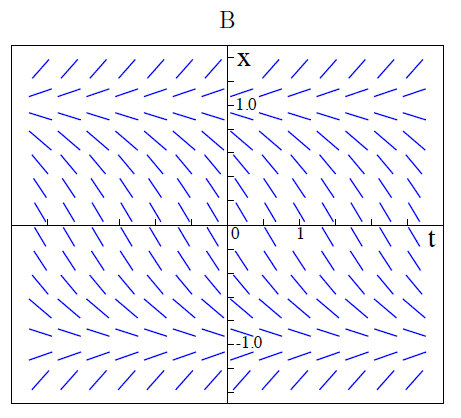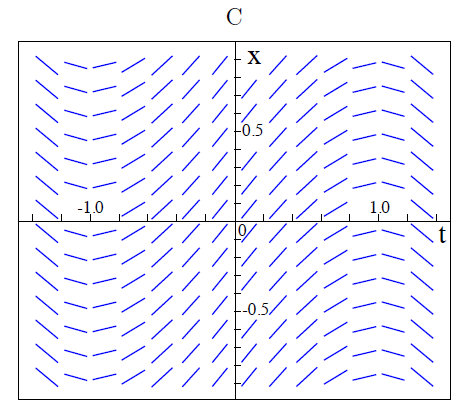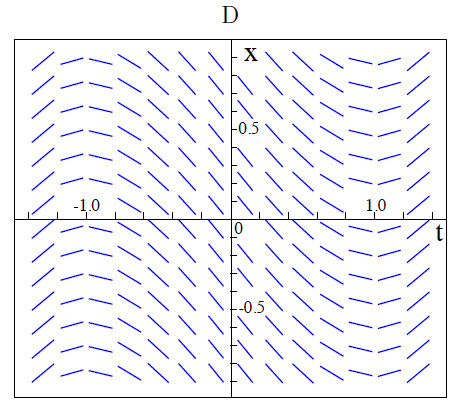Science:Math Exam Resources/Courses/MATH102/December 2012/Question B 01
{{#incat:MER QGQ flag|{{#incat:MER QGH flag|{{#incat:MER QGS flag|}}}}}}
• QA 1 • QA 2 • QA 3 • QB 1 • QB 2 • QB 3 • QB 4 • QB 5 • QB 6 • QC 1 • QC 2 • QC 3(a) • QC 3(b) • QC 3(c) • QC 4(a) • QC 4(b) • QC 4(c) • QC 51 • QC 52 •
Question B 01 |
|---|
|
For the following questions, refer to the slope fields in the figure below. Match the plots below with the differential equations by filling in the box with A, B, C, D, or NOT (for "None Of These").
|
|
Make sure you understand the problem fully: What is the question asking you to do? Are there specific conditions or constraints that you should take note of? How will you know if your answer is correct from your work only? Can you rephrase the question in your own words in a way that makes sense to you? |
|
If you are stuck, check the hints below. Read the first one and consider it for a while. Does it give you a new idea on how to approach the problem? If so, try it! If after a while you are still stuck, go for the next hint. |
Hint 1 |
|---|
|
To read slope field graphs, one chooses a t and x value and goes to that point of the graph. The slope of the line that appears there is the value of dx/dt at those particular x and t values (for example, flat horizontal lines have slope 0 and so dx/dt=0 there). |
Hint 2 |
|---|
|
Secondly, check, if the slope field is independent of or . Therefore, restrict the slope field to vertical or horizontal lines (maybe using a ruler), and verify if the restrictions look equal in any of these two directions. The ODE is independent of (only depending on ), if the vertical restrictions look equal. The ODE is independent of (only depending on ), if the horizontal restrictions look equal. |
Hint 3 |
|---|
|
Thirdly, check at which (for -independent slope fields) the slopes become horizontal. At these , the appropriate ODE has an equilibrium, is equal to zero.
|
|
Checking a solution serves two purposes: helping you if, after having used all the hints, you still are stuck on the problem; or if you have solved the problem and would like to check your work.
|
Solution |
|---|
|
Field A:
This fits exactly to the ODE (d).
This fits exactly to the ODE (c).
Field C:
This fits exactly to the ODE (a).
ODE (b) and Field D: This ODE causes a slope field where the slopes are horizontal for every and . This is not the case for the Field D. Hence, ODE (b) and Field D cannot fit. |
{{#incat:MER CT flag||
}}





















